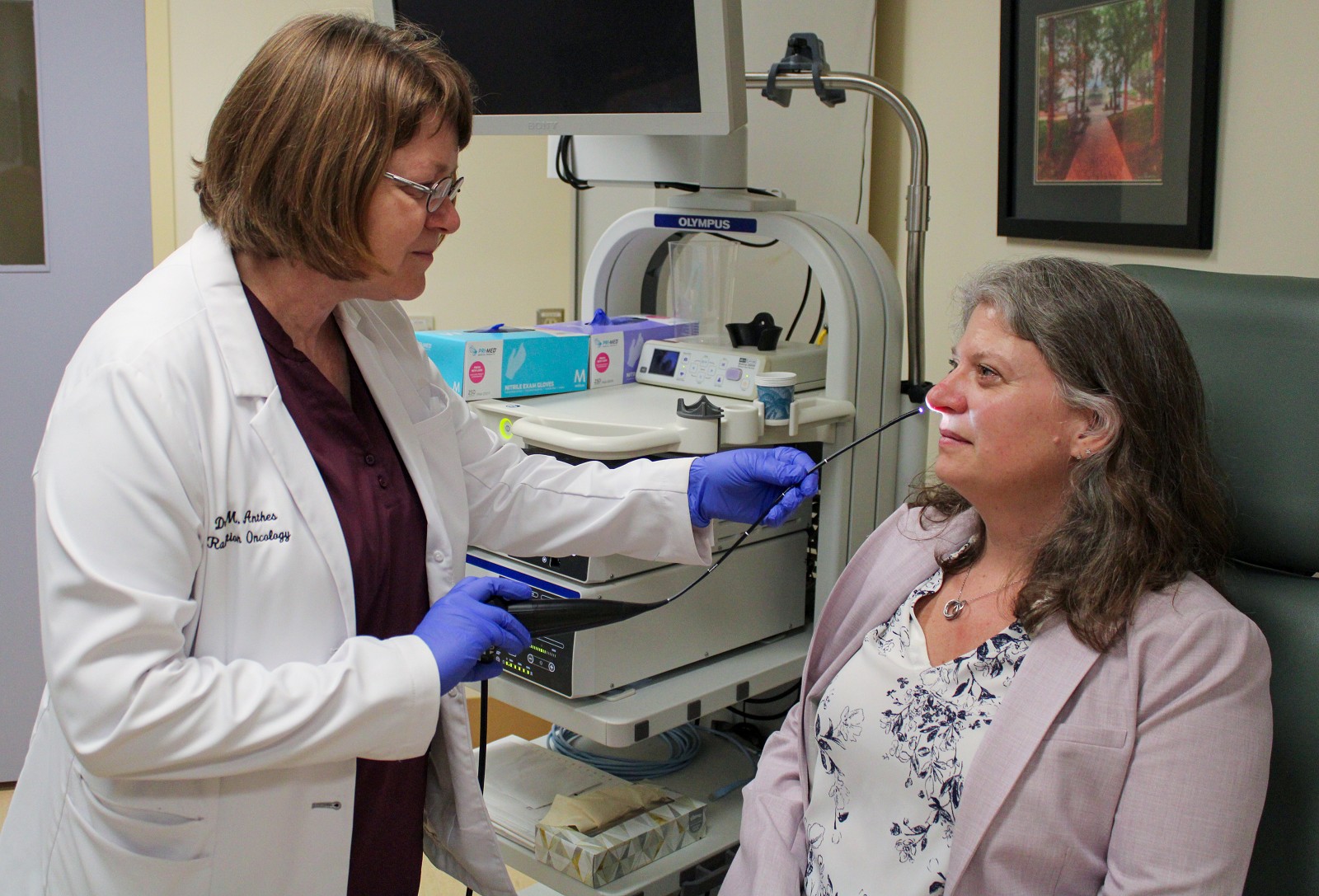We Are Doing More to Fund More “Smaller” Equipment
Published Wednesday, June 12, 2024

Pictured L-R Dr. Margaret Anthes performing a mock demonstration of the rhinolaryngoscope on Mellissa Linke, Manager of Radiation Therapy, Surgical Oncology & Tamarack House.
It's easy to point to the big projects like the new Cath Lab and the Emergency Department renovations and say, “Yes! That's what our donors helped build!” And it's so true. But there are many projects still vitally important to the care we give our patients that may not need the same level of funding. Thanks to your overwhelming support and donations, we can fund even more – and get them the funding they need faster.
The dose drawing station for Nuclear Medicine is a great example of these small-but-important pieces of equipment. Once our cyclotron produces the radioisotopes needed for diagnostic imaging PET scans, a medical radiation technologist draws the fluorodeoxyglucose (FDG 18F) into a syringe. This dose contains a small amount of radioactivity, which is very safe for diagnostic patient exposure.
For the technologists preparing these doses daily, gripping the vial to fill the syringe also exposes them to this small amount of radioactivity. Again, occasional exposure is safe, but with more and more PET scans ordered at our Hospital every year, radiation exposure risks increase with the number of doses they handle.
A new dose drawing station purchased thanks to our generous donors solves that problem. This station allows technologists to safely draw the FDG 18F from a shielded vial into a shielded syringe to keep staff safe.
“Everything is completely shielded, so the technologists have very little exposure,” said Sandra Willson, Manager of Nuclear Medicine.
Rhinolaryngoscopes are another small but crucial piece of equipment. The scope is a long thin wire with a bright light and camera that goes through the nose and down the throat. It helps doctors visualize certain head and neck cancers including throat cancers before, during, and after treatment.
“The rhinolaryngoscope gives you a really good view of the whole throat all the way down,” said Dr. Margaret Anthes, a radiation oncologist who has been at our Cancer Centre since 1996. “Today's rhinolaryngoscopes provide higher definition digital images that can be recorded.”
The Cancer Centre holds three clinics per month where patients meet with one of the three multidisciplinary teams of a radiation oncologist and a surgeon, and sometimes a medical oncologist for chemotherapy.
“We see about 60 to 70 patients per month for follow-up,” said Mellissa Linke, Manager of Radiation Therapy, Surgical Oncology & Tamarack House. “Because it's a multidisciplinary clinic, it's one appointment for the patient instead of booking several different ones.”
It takes about 45 minutes to sterilize the equipment between each use, so the clinic needs several on hand to reduce wait times for patients.
Lastly, new urodynamics equipment helps urologists and gynaecologists diagnose, plan treatments, and monitor lower urinary tract conditions. For example as men age, they often experience difficulties urinating due to an enlarged prostate or other medical issues. Incontinence in men and women can be a symptom of several different issues. Urinary tract infections, weakening bladder, and other conditions have a wide variety of symptoms and causes.
The new Aquarius CT helps healthcare teams at our Hospital pinpoint causes and plan treatment. This unit can measure bladder pressure, determine how much urine remains in the bladder after urination, and even record muscle and nerve activity such as involuntary contractions. Its touchscreen system and video capabilities make it easier than ever for healthcare teams to use.
Sometimes, great healthcare comes in small packages. You're helping ensure our outstanding healthcare professionals get the equipment they need to give our patients the care they deserve. Together, We're Doing More.